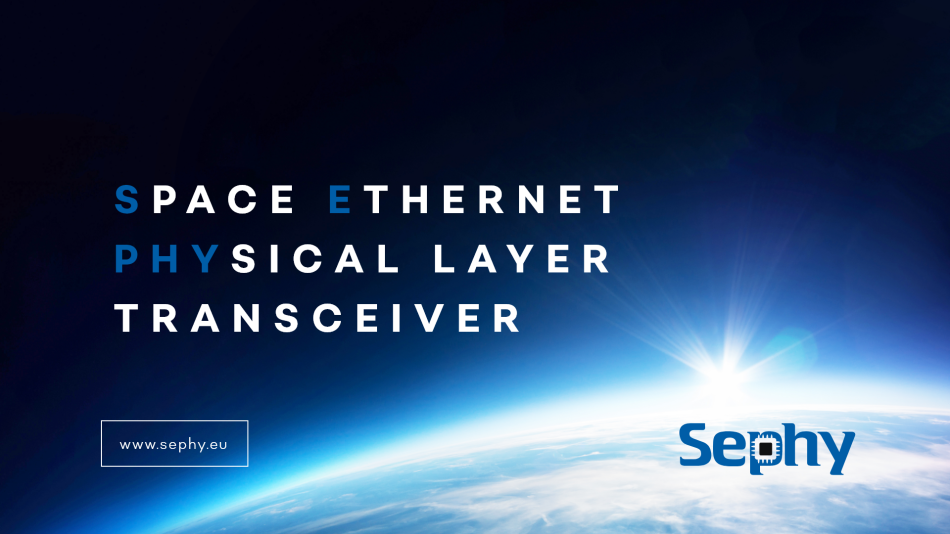SEPHY project delivers key
European communication device

After a duration of almost four years, the EU funded project to create a Space Ethernet Physical Layer Transceiver (SEPHY) was completed at the end of 2018.
A prototype chip was developed and built by the project partners from industry and academia which can now be qualified for space applications, but also for use in other environments where harsh conditions like radiation place special requirements on communication devices.
SEPHY: Space Ethernet Physical Layer Transceiver
Project Description
The growing complexity of space systems is creating the need for high-speed networking technologies to interconnect the different elements of a spacecraft. This interest has spurred initiatives by both ESA and NASA to define the next generation networking technologies for space. In both cases, Ethernet has been the preferred choice due to its wide adoption in terrestrial applications and because it is fully specified in standards to ensure interoperability.
Ethernet is, as most communication protocols, structured in layers with the most relevant ones being the Medium Access Control (MAC) and the Physical (PHY) layer. The PHY layer interacts with the transmission media and ensures that data is transmitted with a low bit error rate. To that end, the PHY devices implement advanced signal processing techniques. In fact, high-speed Ethernet PHYs are complex mixed signal devices that pose significant implementation challenges. There are several Ethernet PHY standards supporting different types of transmission media and speeds. The requirements for integrated circuits that have to operate in space are very different from those that are used in terrestrial applications. In particular, the radiation is much more intense and causes several types of effects on the devices that compromise their reliability. Therefore, special “rad-hard” design and manufacturing techniques are needed for devices that will operate in space. This means that to implement Ethernet in space systems, rad-hard Ethernet components have to be designed. The goal of this project is to design and manufacture rad-hard Ethernet PHYs. In particular a 10/100Mbps PHY is targeted as the first short term objective.
This device will enable the use of Ethernet in space systems and also provide the starting point for the long-term objective of implementing a Gigabit Ethernet PHY for space. To that end, the project will include a feasibility study and also contributions to the 1000BASE-T-1 Ethernet standard that is currently being developed. This standard will use just one twisted pair as opposed to four of the current 1000BASE-T standard. This makes it attractive for space systems where weight and cabling complexity are an issue. This evolutionary approach is justified by the cost of implementing 1000BASE-T and also because the new 1000BASE-T-1 standard will probably be a much better option for space systems.
To implement the Ethernet PHYs, the consortium has significant analogue and digital design capabilities. In addition, it has also experience on the upper layers of Ethernet and its use in Space systems and on the design and implementation of Ethernet PHYs and Ethernet standards. Finally, the electronic technology and manufacturing capabilities are also covered, as are the space system perspective and testing.
This project has received funding from the European Union’s Horizon 2020 Programme for research, technological development and demonstration under grant agreement no 640243.
The current project has a large potential impact as there are no rad-hard Ethernet PHYs at the moment. Therefore, the devices to be implemented will be key to introduce Ethernet in space and to ensure non-dependence for the European industry thanks to the ITAR-free device that will result from SEPHY. TTTech is currently working on the maturation of the TTEthernet technology for space applications. In this specific project, TTTech will contribute to elaborate the network and application requirements for space Ethernet. It will be also involved in the design, implementation and testing of representative use cases that are applicable to TTEthernet in space. Last but not least, TTTech will be in charge of the dissemination, exploitation and communication activities during the project duration.
Anna Ryabokon

